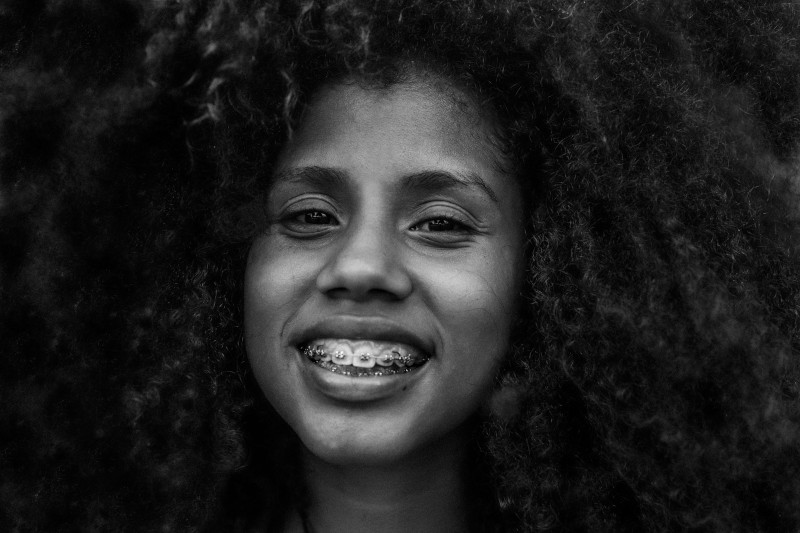Malocclusion is a dental condition that causes the teeth to become misaligned over time. This dental condition often affects children as their baby teeth attempt to make room for their permanent adult teeth; when they don’t have room in their mouths for them to grow, their teeth begin to overlap. This is especially common for young children who suck their thumbs. However, malocclusion can happen to both children and adults.
There are multiple types of malocclusion, including over/underbites, crossbites, abnormal spacing between teeth, teeth that are impacted or missing, and crowded teeth.
What Does Crowded Teeth Mean?
Too many teeth in your mouth can leave little to no room for incoming teeth to grow, resulting in them coming in abnormally or becoming overcrowded. To put this into perspective, the average adult mouth has just room for 32 fully developed teeth. Individuals who have more than 32 teeth are at greater risk of developing an overcrowded mouth, a crooked smile, misplaced teeth, and other dental health complications.
Types of Dental Crowding
There are three different classifications of dental crowding: mild, moderate, and severe:
- Mild: Mildly crowding may occur when a tooth, typically an anterior tooth (incisors or canine teeth) is rotated in comparison to the surrounding teeth.
- Moderate: Moderate crowding may occur after two or three teeth begin to overlap one another.
- Severe: When an individual suffers from severe dental crowding this means that a majority of their teeth are rotated and are overlapping one another.
What Causes Crowded Teeth?
There are different factors that contribute to or cause crowded teeth:
- Losing your baby teeth too early;
- Genetics;
- Abnormally large teeth that are bigger than your jaw;
- Too small of a jaw;
- The improper eruption of adult teeth due to over-retained baby teeth (the adult tooth starts to erupt before the baby tooth is lost);
These are some of the reasons why teeth may become overcrowded in your mouth. Typically, if this happens, the over-retained tooth is extracted to make room for the new, permanent adult tooth.
How to Fix Crowded Teeth
If you feel you may have crowded teeth, you may need to schedule a consultation with an orthodontist in your area. Here, they will discuss the primary methods for correcting crowded teeth and come up with a plan that is tailored to your case. Braces, Invisalign, and surgery are three common methods to repair crowded teeth. It is important to note that any at-home methods to prevent and/or remove crowded teeth can be dangerous. Such a task should be left to professionals.
Braces
Dental braces can be used to correct a variety of mouth concerns like too much/too little spacing in between teeth, overjet teeth, under/overbites, and jaw issues. However, their main purpose is to correct unaligned teeth and improve the appearance of your smile. It is common to wear braces for between two and four years.
Braces work by applying constant pressure to your teeth. From here, they are slowly guided into the correct position. Frequent checkups and brace tightenings are required to ensure your teeth are moving at the right pace and are being guided into the correct spot. To take care of your braces you should:
- Brush your teeth after every meal;
- Rinse with mouthwash and floss at least once a day;
- Visit your orthodontist regularly;
- Invest in oral care products that are safe for braces.
Invisalign
Invisalign is a brand of orthodontic alignment devices that, like braces, are used to straighten crooked teeth. However, unlike braces, Invisalign is removable and virtually unnoticeable. Installing and maintaining Invisalign can be easier than braces because they don’t have wires or brackets to worry about, allowing the wearer to brush, rinse, and floss as they normally would. The amount of time you are required to wear your Invisalign varies on how severe your case is, but the average length of time is between six and eighteen months. Ask an Invisalign orthodontist specialist to see if Invisalign is right for you.
Surgery
Depending on the severity of the case, surgery may be needed to help fix an overcrowded mouth. Typically, this involves corrective jaw surgery, where an oral surgeon repairs any skeletal deformities to help straighten out the teeth. Keep in mind that this type of surgery is usually only needed if crowding caused by an unaligned jaw. However, it may also be required if there are many teeth that need to be extracted at once and the duties are beyond the scope of practice of your local dentist.
It is important to be aware of the signs of overcrowding in your mouth. If left untreated, it could lead to health complications like gum disease, cavities, and more. Your oral health and overall health are connected, so maintaining proper dental care not only benefits the appearance of your smile, but it also decreases the likelihood that you’ll have chronic illnesses and health conditions down the road.
